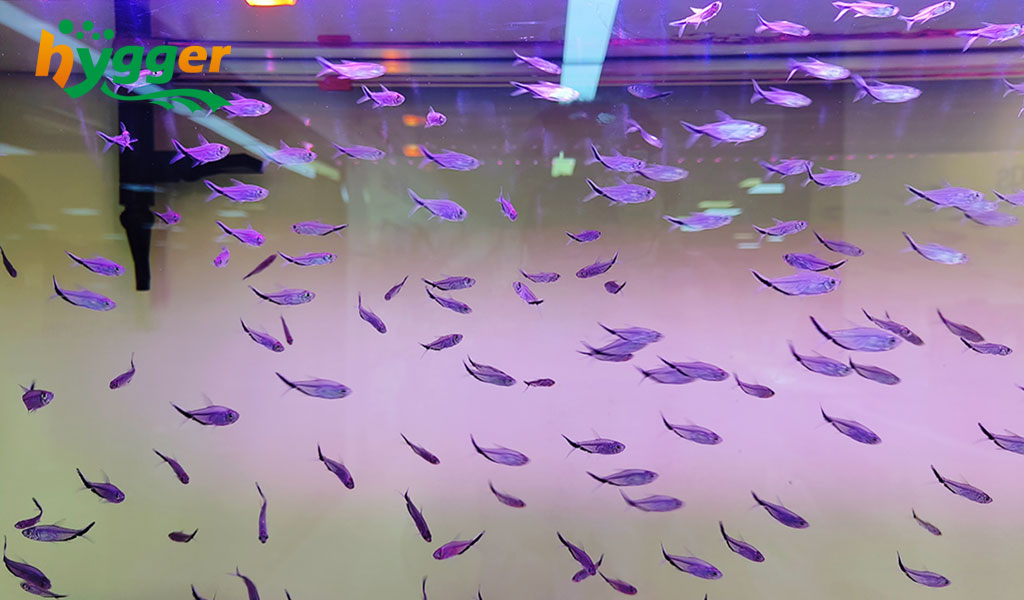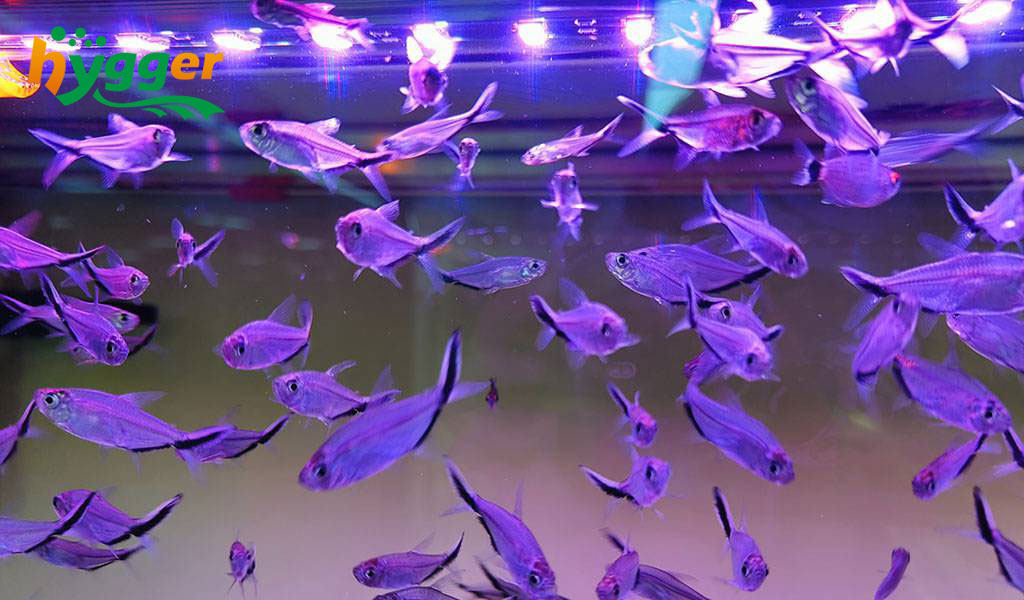Featuring a silver and green body, plus transparent fins, the costae tetra also has special stripes on the caudal and anal fin. In this article, we will walk you through some basic information about costae tetras, like features of costae tetras, and care guides.
Moenkhausia costae tetra
Before getting into deeper learning, let’s have a quick look at the costae tetra.
| Scientific name | Moenkhausia costae | Adult size | About 2.5 inches |
| Other names | Costae Tetra, Blackline Tail Tetra | Temperament | Peaceful |
| Family | Characidae | Care Level | Easy-Intermediate |
| Origin | South America | Minimum tank size | 30 gallons |
| Diet | Omnivore & Micropredator | Swimming Level | Middle-Top |
| Lifespan | 3–5 years | Compatibility | Long-finned or slow-moving fish should be avoided. |
Very sociable tetras
In fact, costae tetras are schooling species. They are active and fast-moving. They like living in groups to defend against predation. And it is best to keep at least 6 in an aquarium. Generally, as long as the aquarium room allows, the more fish, the better. For example, keeping more than 100 tetras is a peculiar scenery of the fishtank.
In addition to costae tetras, here are more schooling tetras:
- Neon tetras
- Cardinal tetras
- Congo tetras
- Lemon tetras
- Diamond tetras

How to keep a school of Costae tetra
Costae tetras are not difficult to care for. Nonetheless, to keep them happy and healthy in aquariums, you should follow some rules. And this segment will share some care guides.
Tank set up
1. Tank size
Costae tetras are schooling fish, and it is recommended to keep them in a school of six or more. But never overstock. A 30 gallons tank is the minimum tank size, while the best height should be over 1.2 meters. Also, the costae tetra aquariums should be large with plenty of space for fish to move around in. Besides that, it is better to add an aquarium lid, which can avoid costae tetra jumping out of fish tanks.
2. Water parameters
Though costae tetras are hardy and tolerable for a wide range of water conditions, maintaining great water conditions provides an enjoyable and healthy living environment for them. And the tetras are fond of freshwater and soft water aquariums. Next, we will cover some references to water parameters.
- Ideal water temperature: 75-82 ℉
- pH level: 6.0-7.5
- Water hardness: 5-18 dGH
- Ammonia level: 0 ppm
- Nitrite level: 0 ppm
- Nitrate level: less than 10 ppm
3. Hiding place
Costae tetras need plenty of hiding places in aquariums. Consequently, you should build enough hiding places with aquatic plants, rocks, stones, wood, or other aquarium decorations. Moreover, dark substrate and background are suitable for costae tetra aquariums. Furthermore, planted tanks are perfect to keep a school of costae tetras.
4. Tankmates
Costae tetras are peaceful. And you can keep them with other peaceful fish of similar sizes. For example, Cardinal tetra, Neon tetra, Zebrafish, and Tiger barb. Also, costae tetras prefer swimming in the middle and top of the tank. Thus, it is feasible to add some peaceful bottom dwellers. On the other side, it is better not to keep costae tetras with slow-moving or long-finned fish. Because costae tetras would cause stress on slow-moving fish.
Daily tank maintenance
1. Tank maintenance
Costae tetras are tropical freshwater fish. And the water temp should be maintained between 75℉ and 82℉. Hence, adding an aquarium heater to keep stable and optimal water temp is necessary. Accordingly, a quartz heater is an excellent alternative, which is perfect for 5-160 gallons tanks. The heater is made of explosion-proof quartz glass material and a high-temperature resistant nickel-chromium heating wire with silicon carbide heat conduction, which makes it anti-corrosion, non-leakage, non-conductive, and explosion-proof. And it can heat water faster and safer.
Aside from maintaining stable water temp, it is also vital to keep great water conditions by changing the water regularly. Generally, it is feasible to change 15-30 percent of water once each week. In this case, a gravel vacuum will help you out. While a gravel vacuum helps to change the water, it also makes sense in sucking out debris and waste from the tank.
2. Diet
Costae tetras are omnivores. The available food includes daphnia, brine shrimp, blood worm, white mosquito larvae, flake foods, pellet foods, and small frozen foods or others. But keep in mind – never overfeed. Otherwise, it would cause health problems or poor water quality because of unnecessary substance accumulation. Commonly, you can feed them once or twice a day and make sure they finish eating within 2–3 minutes. Remember to suck out the uneaten food in time.
3. Lighting
On one side, adding an aquarium light is beneficial for plant growth. Plus, aquarium light is also helpful to enhance fish’s body color. It makes the tetras more attractive and then improves the ornamental value of the tank.
4. Pump air
If you keep a school of costae tetras in tanks with plenty of aquatic plants, adding an air pump would be better. Because plants would release carbon dioxide at night, which may pose risks of oxygen deficiency.
More about these magic beans tetra
In addition to all mentioned above, this part will share some interesting facts about costae tetras. Costae tetra may be afraid of people at the beginning. Commonly, the tetras always take 7–30 days to adapt to the environment. Also, you can turn on the light and play with the fish, then they will gradually get familiar with you. Accordingly, the fear will disappear. Moreover, if two male costae tetras fight, the black stripes would extend to their tail or even anal fin. Additionally, costae tetras are egg scatterers. But they may not breed in home aquariums sometimes.
In conclusion
To conclude, costae tetras are tropical freshwater fish. They are easy to keep in aquariums. Hence, they can be an excellent option for beginners. By the way, if you want to know more about tetra fish, you can go to Most Popular Tetra Fish Types to Aquarists.
For additional info about costae tetra, welcome to share with us in the comment or share them with the hygger aquarium group on facebook. We’re happy to receive your sharing. Finally, thanks for taking the time and we hope this article helps.

